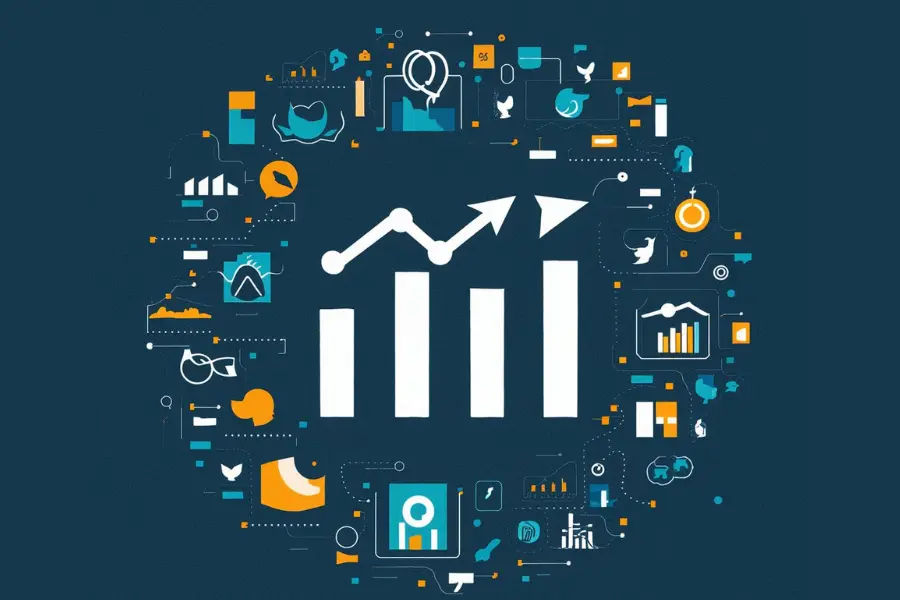Using Social Media Analytics for Business Intelligence
In today's digital era, businesses constantly seek innovative ways to stay ahead of the competition and better understand their market. One powerful tool that has emerged in the realm of Data Analytics is Social Media Analytics. This subset of Business Intelligence (BI) focuses on gathering, analyzing, and interpreting data from social media platforms to drive strategic decisions and achieve business goals. Here, we will explore the significance of Social Media Analytics in Business Intelligence, its benefits, key metrics, and how businesses can effectively leverage this data to gain valuable insights.

The Significance of Social Media Analytics
Social media platforms have become an important part of consumers' lives, with billions of users worldwide engaging on platforms like Facebook, Twitter, Instagram, LinkedIn, and TikTok. These platforms generate vast amounts of data every second, providing a goldmine of information about consumer behavior, preferences, opinions, and trends. Social Media Analytics enables businesses to tap into this wealth of data, transforming raw information into actionable insights.
By analyzing social media data, businesses can:
Understand Customer Sentiment
Social media is a space where customers freely express their opinions and feelings about products, services, and brands. Analyzing these sentiments helps businesses understand how they are perceived in the market and identify areas for improvement.
Identify Trends and Opportunities
Social media trends can provide early indicators of market shifts and emerging opportunities. By staying ahead of these trends, businesses can adapt their strategies proactively and capitalize on new opportunities.
Monitor Competitor Activity
Social media allows businesses to keep an eye on their competitors' activities, campaigns, and customer interactions. This competitive intelligence can inform strategic decisions and help businesses stay ahead in the market.
Enhance Customer Engagement
Understanding what resonates with customers on social media enables businesses to create more engaging and relevant content. This fosters stronger connections with the audience and boosts brand loyalty.
Key Metrics in Social Media Analytics
To effectively leverage Social Media Analytics, businesses need to focus on specific metrics that provide meaningful insights. Some key metrics include:
Engagement Rate
This metric measures the level of interaction (likes, comments, shares) a post or campaign receives. High engagement indicates that the content resonates well with the audience.
Reach and Impressions
Reach refers to the number of unique users who see a post, while impressions measure the total number of times a post is viewed. These metrics help to check the visibility and effectiveness of social media campaigns.
Sentiment Analysis
This involves analyzing the tone and emotions expressed in social media posts to determine whether the sentiment is positive, negative, or neutral. Sentiment analysis provides insights into customer perceptions and brand reputation.
Follower Growth
Tracking the growth of social media followers over time helps businesses understand their expanding reach and popularity among users.
Click-Through Rate (CTR)
CTR measures the percentage of users who click on a link or call-to-action (CTA) in a social media post. It indicates the effectiveness of the content in driving traffic to a website or landing page.
Share of Voice
This metric compares the volume of mentions a brand receives on social media relative to its competitors. It helps businesses understand their market position and brand visibility.
Leveraging Social Media Analytics for Business Intelligence
To harness the power of Social Media Analytics for Business Intelligence, businesses should follow a systematic approach:
Define Objectives
Clearly define the objectives of social media analysis. Whether it's improving customer satisfaction, increasing brand awareness, or driving sales, having specific goals will guide the analysis process.
Select the Right Tools
Invest in robust social media analytics tools that can collect, process, and visualize data effectively. Popular tools include Hootsuite, Sprout Social, and Brandwatch.
Data Collection
Gather data from various social media platforms, including posts, comments, shares, and mentions. Ensure data is collected regularly to track changes over time.
Data Analysis
Use advanced analytical techniques to process and interpret the data. This may involve natural language processing (NLP) for sentiment analysis, trend analysis, and predictive modeling.
Actionable Insights
Translate the analyzed data into actionable insights. Create comprehensive reports and dashboards that highlight key findings and recommendations.
Implement Strategies
Use the insights gained to inform and optimize business strategies. This could involve refining marketing campaigns, improving customer service, or developing new products.
Unleash the power of social media data to drive your business forward!
Want to learn how to turn likes, shares, and comments into actionable insights? Data analytics Bootcamp is your key to mastering social media analytics. Enroll now and join the data-driven revolution!
Active Events
3 Essential Projects to Elevate Your 5c of Content Marketing Portfolio
Date: Feburary 25, 2025 | 7:00 PM(IST)
7:00 PM(IST) - 8:10 PM(IST)
2432 people have registered
3 Must Have Projects On your CV to Get into Data Analysis
Date: Feburary 25, 2025 | 7:00 PM(IST)
7:00 PM(IST) - 8:10 PM(IST)
2753 people registered
Bootcamps
Data Science Bootcamp
- Duration:8 weeks
- Start Date:October 5, 2024
Digital Marketing Bootcamp
- Duration:8 weeks
- Start Date:October 5, 2024
